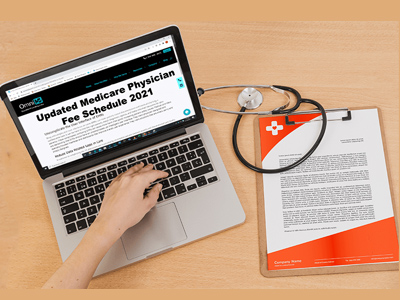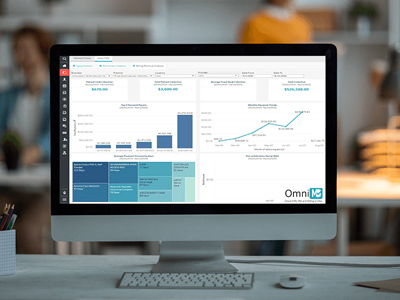
Looking to 2021: What’s Coming in Health Information Technology
Looking to 2021: What’s Coming in Health Information Technology
January 20, 2021
2020 has been a trying year and health systems have been severely impacted by COVID-19.
The Center for Connected Medicine completed a survey of over one hundred executives from 112 U.S. health systems to find what the top priorities for Health Information Technology are in 2021.
Telehealth, Artificial Intelligence, and Revenue Cycle Management are the main topics healthcare organizations will focus on in the New Year.
Telehealth
Before 2020, telehealth as an option for care was continually improving but still saw slow adoption rates. When COVID-19 hit, telehealth saw an explosion in growth.
Reimbursement rates have always been a contributing factor in healthcare systems being slow to embrace telehealth. The pandemic changed all of that, at least temporarily.
Moving into 2021, COVID-19 has accelerated the use of telehealth resources and many health systems plan to continue utilizing and expand telehealth use. Because it was implemented so quickly that the coming year will focus on improving implementation, and integration and security measures to ensure telehealth is a safe and viable option.
Many healthcare organizations are concerned telehealth visits will decrease once in-person appointments resume. Additionally, there is concern around reimbursement levels once the pandemic calms down.
It is very likely the telehealth’s growth will continue even after the pandemic is over. Roughly 71% of patients in the United States utilized telemedicine at the beginning of the pandemic, and 50% had already considered virtual appointments. With telehealth already rising in popularity in 2020, the pandemic boosted the industry’s development. This telehealth boom seems likely to break $185.6 billion by 2026.
The success of telehealth will be utmost dependent on adoption by patients. Since most patients are comfortable with telehealth solutions, it is clear that the industry has a strong future and it is the best time to integrate Electronic Health Records (EHR) with telemedicine apps.
Artificial Intelligence
Pre-pandemic, many health systems used Artificial Intelligence (AI) for clinical decision support (CDS), dictation, and transcription and diagnostic medical imaging.
Moving forward, predictive analytics will continue to grow. By utilizing and improving AI, health conditions like lung cancer may be detected earlier using image-recognition technology. At present, AI is used in limited cases and not at a system-wide level. Artificial Intelligence can profoundly improve the precision, speed, and efficiency of diagnoses.
MIT and Harvard University research team has utilized machine learning to track trends in mental health in correlation to the COVID-19 pandemic. A UCLA project has combined chatbot technology with AI systems to create a Virtual Interventional Radiologist (VIR).
Regulations will play a large part in how AI develops as we move into 2021. There are several areas of concern. The first is the data that is allowed to be placed in AI solutions. Many organizations are fine with current regulations, but there is concern that stricter privacy policies may inhibit further AI capabilities. On the other hand, there is apprehension that data currently kept by vendors and third parties is not secure as well as developing shared public datasets and environment for AI training & testing. Needless to say, it will also be essential to evaluate and establish AI technologies using standards and benchmarks and expand public-private partnerships to accelerate advances in AI.
Revenue Cycle Management
Even pre-COVID-19, Revenue Cycle Management (RCM) has needed vast innovation and disruption.
Many see RCM as overly technical and complex, despite the healthcare technology available. Organizations pointed out fragmented technology and the lack of an all-in-one solution as major issues with RCM. COVID-19 has highlighted a lack of coherency in RCM and shows that major improvement is needed.
The lack of unity between the government, payers, and providers is another factor stunting RCM growth. Based on what has happened in 2020, many feel the healthcare industry will have to innovate out of necessity. These changes will likely come from improved relationships, regulatory changes from the federal government, and system-wide health care billing improvements.
The next level of healthcare revenue cycle management (RCM) is seen in hands-free automation of several billing activities, eliminating routine and time-consuming manual work daily, weekly, or monthly. The end goal of technologists in the RCM industry will be to provide flexible setup, easy-to-use navigation, detailed logging of each activity and action, automate medical billing and revenue cycle management processes so minimal-to-no human intervention is needed for 70-80% of the revenue cycle.
Furthermore, the importance of predictive analytics, AI, bots, and automation has already been highlighted for RCM efficiency as well as proactive focus on the front-end processes rather than back-end problems.
Some feel RCM improvements will occur slowly, while others are optimistic improvements will be made in 2021.
As we move into a new year, healthcare will continue to be impacted by the pandemic. The focus will remain on getting through the pandemic, many are optimistic that several improvements will be made due to the ever-changing healthcare landscape caused by COVID-19.
Source: https://healthmanagement.org/c/it/news/hit-in-2021-most-important-aspects








